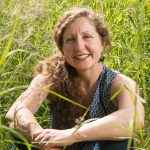Trump’s Great American Forest Liquidation Sale
Published November 20, 2018 (Part one of a series)
By Paul Koberstein and Jessica Applegate
Starting in Alaska’s Tongass National Forest, the Trump administration is proposing to eliminate long-standing rules protecting 50 million acres of ancient forests across the country from logging and roadbuilding, raising new alarms about the president’s disregard for the climate and wildlife.
Taxpayers, already spending billions to keep Alaska’s timber industry afloat, could end up paying even more. If Trump strips roadless protection from the Tongass, no National Forest is safe.
Keep reading at Cascadia Times
Roads into Alaska’s Tongass can affect climate
By Adam Aton, E&E News reporter (F

The Trump administration is one step closer to carving roads through one of the country’s biggest carbon sinks.
Earlier this week, comments closed on an industry-supported proposal that could reshape the Tongass National Forest, the country’s biggest stretch of woods. The federal plan is advancing as scientists say that forests will help determine what level of damage the world experiences from warming — bad to catastrophic.
Photo by Dominick DellaSala
The Forest Service proposal aims to build roads through the Tongass. But it’s more than a traffic question. Both sides see it as a precursor to logging more old-growth trees. And more broadly, conservationists say it illustrates the gap between what forests need to thrive and what this administration is giving them.
235 Scientists tell the Forest Service to put the brakes on Tongass Roadless Area logging and development
 Contact: Dr. Dominick DellaSala (Dominick@geosinstitute.org; 541-621-7223)
Contact: Dr. Dominick DellaSala (Dominick@geosinstitute.org; 541-621-7223)
Ashland, Oregon – over two hundred of the nation’s top conservation and natural resource scientists called on the Forest Service to suspend its efforts to rollback popular roadless area protections on over 9 million-acres of the nation’s most intact temperate rainforest in Alaska.
Considered the crown jewel of the national forest system, the 16.8 million-acre Tongass National Forest in southeast Alaska contains thousands of near shore islands, spectacular glaciated mountains, and towering spruce-hemlock forests. Roadless areas (>5,000-acre areas lacking development) are the ecological foundation to some of the world’s most prolific salmon runs that support fish-eating bears, eagles, and wolves along with a vibrant outdoor and recreation economy that supports far more jobs and generates more money for local communities than the region’s extraction industries. Tongass old-growth forests, which the Forest Service intends to log, store more carbon than any forest in the nation, which is key to Alaska’s ability to prepare for unprecedented climate change already well underway.
According to Dominick A. DellaSala, Chief Scientist, Geos Institute in Ashland, Oregon, and editor/author of Temperate and Boreal Forests of the World: Ecology and Conservation, “Forest Service would best serve the public by shifting timber supply to young forests where a wall-of-wood will soon be ready to support the timber industry, instead of a wall-of-opposition from the public concerned about the fate of rainforests.”
The Roadless Conservation Rule (2001) protects over 50 million acres of the nation’s last intact landscapes. At the time, over 1 million Americans provided comments in support of this landmark conservation achievement, including hundreds of scientists that wanted Tongass roadless areas to have national protections. The Tongass is unique in containing over 9 million roadless acres, which is over half this national forest and ~19% of the national total.
Retired Alaskan wildlife biologist, Matt Kirchhoff, noted “ancient cedars will be cut down and exported to the Far East, and ironically, the US Taxpayer will pay for it. It’s time to stop the madness. Protect the still intact roadless areas in America’s only temperate rainforest.”
Retired Alaskan wildlife ecologist and co-editor/author of North Pacific Temperate Rainforests, John Schoen added “the consensus of scientists, including two former Forest Service Chiefs (Mike Dombeck, Jack Ward Thomas) is the nation’s remaining old growth should be protected from developments. Excluding the Tongass from the national roadless protections will have an irreversible consequence to the vibrant fish and wildlife populations that depend on these areas in America’s largest national forest.”
The Forest Service is taking public comments, which closes October 15, and has a website with details on the Alaska proposal.
Media Coverage
- Roads into Alaska’s Tongass can affect climate (E&E News, October 19, 2018)
Keep the Tongass wild and roadless
By Dominick DellaSala, John Schoen and John Talberth
Originally published by the Juneau Empire, August 14, 2018
Alaskans are blessed with some of the wildest, most biologically prolific forests on the planet. Nowhere else is this more evident than the Tongass rainforest, the crown jewel of the national forest system. Unfortunately, the State of Alaska announced plans to team up with the Trump Administration to open up millions of acres to logging and road-based developments. This ill-conceived proposal would degrade the region’s pristine character and the foundation of a robust outdoor economy.
The Roadless Conservation Rule of 2001 protected over 58 million acres of the nation’s most remote places. It was the premier conservation achievement of its time that took years of careful deliberation, an unprecedented number of public meetings, over 1 million strongly (more than 95 percent) supportive public comments, and the backing of hundreds of scientists, all of who wanted the Tongass included.
While the Roadless Rule protects intact areas larger than 5,000 acres from logging, it has numerous allowances to include road connections between communities and other state highway projects, access to mining claims under the Mining Law of 1872, and access to utility corridors and hydropower projects. Some 55 projects within roadless areas in Alaska have been rapidly approved by the Forest Service. The Roadless Rule there fore is working in Alaska and plans to gut it are misguided.
Keep the Tongass wild and roadless
By Dominick DellaSala, John Schoen and John Talberth
Originally published by the Juneau Empire, August 14, 2018
Alaskans are blessed with some of the wildest, most biologically prolific forests on the planet. Nowhere else is this more evident than the Tongass rainforest, the crown jewel of the national forest system. Unfortunately, the State of Alaska announced plans to team up with the Trump Administration to open up millions of acres to logging and road-based developments. This ill-conceived proposal would degrade the region’s pristine character and the foundation of a robust outdoor economy.
The Roadless Conservation Rule of 2001 protected over 58 million acres of the nation’s most remote places. It was the premier conservation achievement of its time that took years of careful deliberation, an unprecedented number of public meetings, over 1 million strongly (more than 95 percent) supportive public comments, and the backing of hundreds of scientists, all of who wanted the Tongass included.
While the Roadless Rule protects intact areas larger than 5,000 acres from logging, it has numerous allowances to include road connections between communities and other state highway projects, access to mining claims under the Mining Law of 1872, and access to utility corridors and hydropower projects. Some 55 projects within roadless areas in Alaska have been rapidly approved by the Forest Service. The Roadless Rule there fore is working in Alaska and plans to gut it are misguided.
Geos Institute board member Catherine Mater on how the Tongass can transition rapidly out of old-growth logging.
Read the April 11, 2018 article “Alaska’s transition away from old growth logging just got a big step closer” online at JuneauEmpire.com
Alaska’s old-growth forests are our climate-change insurance policy
Originally published March 15, 2018, available online at Seattle Times
There is no better place to experience old-growth forests than the Tongass and Chugach national forests. Here, all five species of Pacific salmon line up to spawn like rush-hour traffic, spruce and hemlock trees tower like skyscrapers, and bears and wolves still run free.
By Gordon Orians and Dominick A. DellaSala
The Tongass National Forest in Alaska, the crown jewel of our national forest system, is facing an unprecedented threat.
At the end of last year, U.S. Sen. Lisa Murkowski, R-Alaska, introduced two legislative budget riders aimed at allowing thousands of acres of pristine, roadless old-growth rain forest on the Tongass and the Chugach National Forest to be clear-cut.
We recently joined more than 220 of our fellow scientists from Alaska and across the country in sending a letter to Congress urging members to reject these backdoor efforts to undermine long-standing roadless and old-growth forest protections.
Alaska’s old-growth forests are our climate-change insurance policy
Originally published March 15, 2018, available online at Seattle Times
There is no better place to experience old-growth forests than the Tongass and Chugach national forests. Here, all five species of Pacific salmon line up to spawn like rush-hour traffic, spruce and hemlock trees tower like skyscrapers, and bears and wolves still run free.
By Gordon Orians and Dominick A. DellaSala
The Tongass National Forest in Alaska, the crown jewel of our national forest system, is facing an unprecedented threat.
At the end of last year, U.S. Sen. Lisa Murkowski, R-Alaska, introduced two legislative budget riders aimed at allowing thousands of acres of pristine, roadless old-growth rain forest on the Tongass and the Chugach National Forest to be clear-cut.
We recently joined more than 220 of our fellow scientists from Alaska and across the country in sending a letter to Congress urging members to reject these backdoor efforts to undermine long-standing roadless and old-growth forest protections.
Geos Institute on steering committee of IntAct
Geos Institute is part of an international coalition dedicated to protecting the world’s last remaining primary (unlogged) and intact forest landscapes (forest legacies). We are on the steering committee and science committee for Intact: International Action for Primary Forests. You can learn about the climate, water quality, and biodiversity benefits of these remarkable forests by clcking here: www.primaryforest.org – our position is that the planet’s remaining primary (old growth) forests should be free of industrial activities. Read our statement and see the list of organizations that have already signed on.
Tongass Second Growth Transition – Summary of Results
Mater Engineering, Geos Institute, and NRDC young growth study reveals Tongass can transition out of old growth logging quickly.
View the summary of results of results (PDF)
Latest News
Stay Updated!
Sign up to stay updated on our current initiatives and receive information you can use to build resilience in your community.

 Samantha Medlock is President of Climate Risk Advisors, helping communities and organizations advance equity, sustainability, and resilience. Her career began chasing floods as a local official in Texas Flash Flood Alley—a hands-on experience that still shapes her approach to climate and disaster risk management.
Samantha Medlock is President of Climate Risk Advisors, helping communities and organizations advance equity, sustainability, and resilience. Her career began chasing floods as a local official in Texas Flash Flood Alley—a hands-on experience that still shapes her approach to climate and disaster risk management.
 Arsum is the Senior Adaptation and Coastal Resilience Specialist for the National Wildlife Federation’s Southcentral Region. In this role, she advances climate adaptation efforts, with a focus on nature-based approaches to address the impacts of climate change and extreme events across the Gulf region. She has authored and co-authored numerous publications on climate impact assessments and adaptation solutions. Additionally, she regularly participates in state-based coastal resilience and hazard mitigation planning across the Gulf, collaborating with regional and local stakeholders.
Arsum is the Senior Adaptation and Coastal Resilience Specialist for the National Wildlife Federation’s Southcentral Region. In this role, she advances climate adaptation efforts, with a focus on nature-based approaches to address the impacts of climate change and extreme events across the Gulf region. She has authored and co-authored numerous publications on climate impact assessments and adaptation solutions. Additionally, she regularly participates in state-based coastal resilience and hazard mitigation planning across the Gulf, collaborating with regional and local stakeholders. Frank is the former President of the Reinsurance Association of America. Frank currently serves on the Advisory Board of the OECD’s International Network for the Financial Management of Large-Scale Disasters, the RAND Center on Catastrophic Risk Management and Compensation, and the University of Cincinnati’s Carl H. Lindner III Center for Insurance and Risk Management Advisory Board.
Frank is the former President of the Reinsurance Association of America. Frank currently serves on the Advisory Board of the OECD’s International Network for the Financial Management of Large-Scale Disasters, the RAND Center on Catastrophic Risk Management and Compensation, and the University of Cincinnati’s Carl H. Lindner III Center for Insurance and Risk Management Advisory Board. Jim is a multilingual world traveler. Based in Bavaria during the 1970s, Jim spent most of this period in India, Afghanistan and Nepal, where he founded and operated a charitable medical clinic serving Tibetan Refugees. He settled in Oregon in 1983 on a forested ranch in the Umpqua National Forest.
Jim is a multilingual world traveler. Based in Bavaria during the 1970s, Jim spent most of this period in India, Afghanistan and Nepal, where he founded and operated a charitable medical clinic serving Tibetan Refugees. He settled in Oregon in 1983 on a forested ranch in the Umpqua National Forest. Dr. Micah Hahn is an Associate Professor of Environmental Health in the Institute for Circumpolar Health Studies at the University of Alaska-Anchorage. She received her joint PhD in Epidemiology / Environment and Resources from the University of Wisconsin-Madison and her MPH in Global Environmental Health from Emory University. Subsequently, she was a postdoctoral fellow for the CDC Climate and Health Program, and in this position worked collaboratively with the CDC Division of Vector-borne Diseases and the National Center for Atmospheric Research. Her research focuses on understanding the health impacts of climate change and working with communities to develop locally-relevant adaptation and resilience-building strategies. Dr. Hahn is also on the Management Team of the Alaska Climate Adaptation Science Center.
Dr. Micah Hahn is an Associate Professor of Environmental Health in the Institute for Circumpolar Health Studies at the University of Alaska-Anchorage. She received her joint PhD in Epidemiology / Environment and Resources from the University of Wisconsin-Madison and her MPH in Global Environmental Health from Emory University. Subsequently, she was a postdoctoral fellow for the CDC Climate and Health Program, and in this position worked collaboratively with the CDC Division of Vector-borne Diseases and the National Center for Atmospheric Research. Her research focuses on understanding the health impacts of climate change and working with communities to develop locally-relevant adaptation and resilience-building strategies. Dr. Hahn is also on the Management Team of the Alaska Climate Adaptation Science Center. Michael is a former Founding Principal of Resilient Cities Catalyst, a global non-profit helping cities and their partners tackle their toughest challenges. He is currently the Executive Director of Climate Resilience Academy at the University of Miami.
Michael is a former Founding Principal of Resilient Cities Catalyst, a global non-profit helping cities and their partners tackle their toughest challenges. He is currently the Executive Director of Climate Resilience Academy at the University of Miami. Dr. Quintus Jett is a consultant, educator, and strategist for public causes. He has a doctorate in Organizations & Management from Stanford University, and a two-decade faculty career which spans schools, departments, and programs of business, engineering, liberal studies, divinity, and public and nonprofit management. Following Hurricane Katrina in 2005, Dr. Jett launched a volunteer project in New Orleans, which enlisted residents, students from over a dozen colleges and universities, and hundreds of others to field map the city’s Gentilly district, Lower Ninth Ward, and New Orleans East. Dr. Jett is an innovator in higher education, bridging the divide between academic research and the other priorities of the modern university, including student access and diversity, community engagement, and providing foundations for life-long learning in today’s rapidly changing world.
Dr. Quintus Jett is a consultant, educator, and strategist for public causes. He has a doctorate in Organizations & Management from Stanford University, and a two-decade faculty career which spans schools, departments, and programs of business, engineering, liberal studies, divinity, and public and nonprofit management. Following Hurricane Katrina in 2005, Dr. Jett launched a volunteer project in New Orleans, which enlisted residents, students from over a dozen colleges and universities, and hundreds of others to field map the city’s Gentilly district, Lower Ninth Ward, and New Orleans East. Dr. Jett is an innovator in higher education, bridging the divide between academic research and the other priorities of the modern university, including student access and diversity, community engagement, and providing foundations for life-long learning in today’s rapidly changing world. Scott is Monfort Professor of Atmospheric Science at Colorado State University. He has written about 100 publications in the peer-reviewed climate literature, is a former editor of the Journal of Climate, and served for five years as founding Science Chair of the North American Carbon Program.
Scott is Monfort Professor of Atmospheric Science at Colorado State University. He has written about 100 publications in the peer-reviewed climate literature, is a former editor of the Journal of Climate, and served for five years as founding Science Chair of the North American Carbon Program. Linda has many years of experience in disaster preparedness and resilience. She has been an elected official on the Linn County Iowa Board of Supervisors, Chair of the Metropolitan Planning Organization, the East Central Iowa Council of Governments, the statewide Mental Health Developmental Disability and the Linn County Board of Health. Langston is a former president of the National Association of Counties (2013-2014).
Linda has many years of experience in disaster preparedness and resilience. She has been an elected official on the Linn County Iowa Board of Supervisors, Chair of the Metropolitan Planning Organization, the East Central Iowa Council of Governments, the statewide Mental Health Developmental Disability and the Linn County Board of Health. Langston is a former president of the National Association of Counties (2013-2014). Ken works with families and organizations as a mediator, organizational consultant, trainer and facilitator. Along with his passion for helping people prepare for and reduce climate change, Ken also volunteers as a mediator through Mediation Works and is passionate about supporting youth through mentoring with Boys to Men of Southern Oregon.
Ken works with families and organizations as a mediator, organizational consultant, trainer and facilitator. Along with his passion for helping people prepare for and reduce climate change, Ken also volunteers as a mediator through Mediation Works and is passionate about supporting youth through mentoring with Boys to Men of Southern Oregon. Matthew is a retired high school teacher who was once honored as Oregon High School Social Studies Teacher of the Year. Before his teaching career he was in the restaurant business in Portland. He is also a lawyer who has been a member of the Oregon State Bar Association since 1980.
Matthew is a retired high school teacher who was once honored as Oregon High School Social Studies Teacher of the Year. Before his teaching career he was in the restaurant business in Portland. He is also a lawyer who has been a member of the Oregon State Bar Association since 1980. Andrea is the Resilience Policy Advisor for the North Carolina Office of Recovery and Resiliency. She works across state agencies and with local governments to increase the state’s resilience to the impacts of climate change.
Andrea is the Resilience Policy Advisor for the North Carolina Office of Recovery and Resiliency. She works across state agencies and with local governments to increase the state’s resilience to the impacts of climate change.